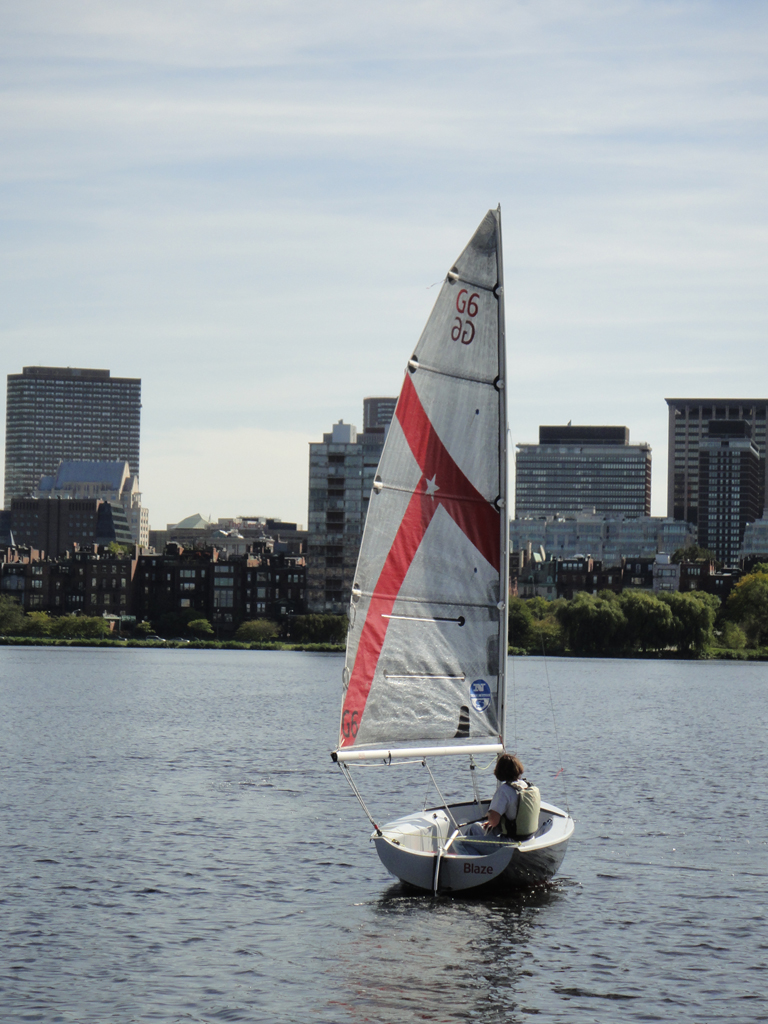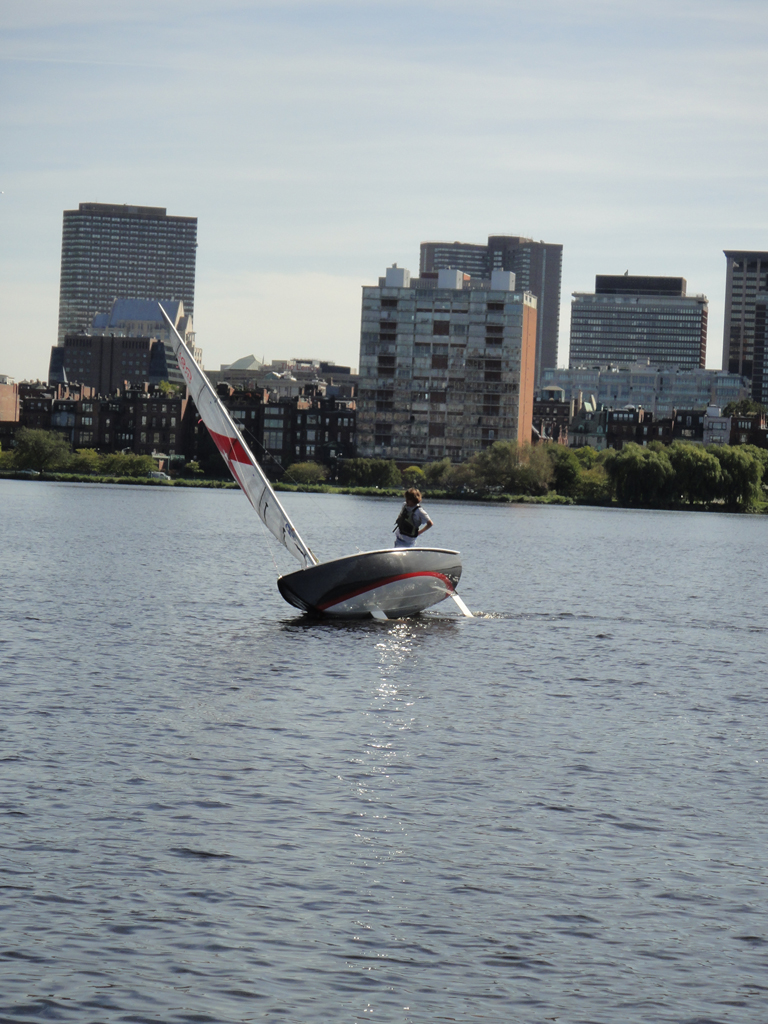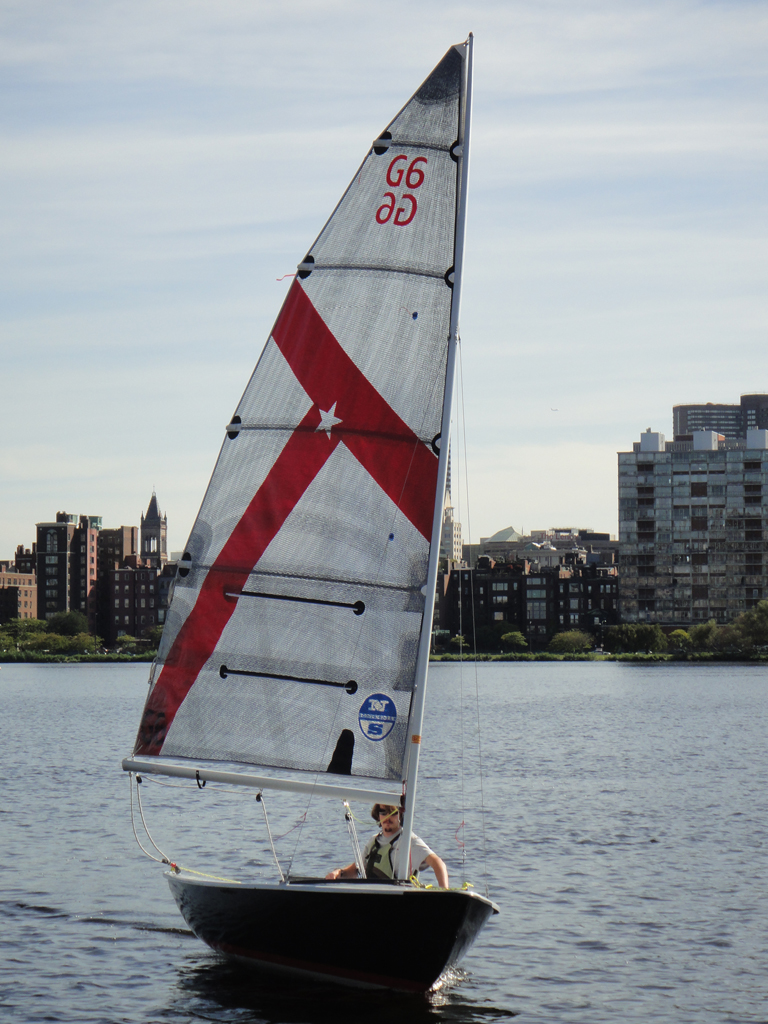Progress:

MIT Sailing
75th Anniversary Renewal Project
TECH DINGHY Fleet of 30 Boats
Introducing the G6!

MIT has made an enormous effort to make sailing more accessible to all who wish to learn. Unfortunately, the small Tech Dinghy boats have gotten so heavy in an effort to make them durable that they are not responsive and lively anymore. The sixth generation tech dinghy will change that!
In the Fall of 2010 Halsey Herreshoff, designer of the 3rd generation tech dinghy, and Penn Edmonds, designer of America Cubed, came to MIT to discuss ideas for improving the next generation of tech dinghies. The new G6 generation of techs was born! They have a roomier cockpit, self-bailing capabilities and enhanced sailing dynamics.
Using carbon fiber in the hull and deck surface areas we have cut the weight of the boat in half. Furthermore, with coring the panel stiffness will actually increase dramatically over the current single skin layup.


The boat has been sailed by total novices into another boat, directly into the fixed dock, onto the esplanade shore and, yes, directly into the Cambridge granite wall. It survived all of these encounters without the need for any repairs!
It is lively, responsive and fun to sail in light winds and strong breezes. MIT alums Penn Edmonds and Claudio Cairoli both contributed to designing and engineering the new boat and the result is the best of the old design combined with new materials in a very durable construction schedule. And the boat comes up completely dry from capsizes, too.
The carbon fiber tech dinghy was constructed by Andrew Pimental of Jibe Tech in Portsmouth, RI. Jibe Tech made our 5th generation tech dinghies and is a renowned Snipe and Yngling Class builder. MIT owns the tech dinghy molds including the new deck mold.
These are some of the outstanding features of the new Tech Dinghy G6:
- Plug inside the cockpit: In the new Tech dinghy, the cockpit drains into the tank. In our newest Firefly, the cockpit drains through the floor and is both effective and very visual for our recreational sailors. MIT will employ the through hull drain system similar to the Firefly fleet in the techs.

- Boomvang: This boomvang is located ideally for both racers and recreational sailors. The cleats are located far enough forward so that the crew does not sit on them, but aft enough that the skipper can adjust it when sailing singlehanded. Furthermore, we can disconnect the vang to reduce power in the learn-to-sail classes. Centerboard handle is identical to the handle system on the original Herreshoff built boats from 1936. It can be bungeed in place when the boat is hauled onto the dock. Hiking straps attach to an eye straps near the base of the mast and clip to the eye strap in the center of the stern. This allows them to be removed so our beginners don't trip over them.

- Rudder: The cassette style rudder head is a brilliant method of making the hardware and fittings robust and permanently attached to the back of the boat. However the removable rudder foil which we originally received with the dinghy was too small in surface area for the boat. After tacking, the stern would wash out to leeward bringing the boat into the breeze. The boat was also more difficult to maneuver at slow speeds with this original sized blade. Our firefly rudder, pictured top left, was also slightly undersized. The new rudder, pictured next to the Firefly rudder, was ideally sized for both boats. It has the original Tech rudder outline traced onto it. The size difference required us to bolt the rudder to the frame, but we would like to use the cassette style in the final design. The hull waterline was extended aft to make the transom vertical for a 'cassette' style head. This also allows the tiller to pivot in a constant plane from side to side.

- Mast Partner & Staymasters: The mast partner is bolted in place on the forward vertical bulkhead and helps to center the mast. The spars are 50% lighter than the last generation aluminum masts and they require a bit more support at deck level while reaching and running as well. The staymaster turnbuckles allow sailors to adjust the rake of the mast through a wide range.

- Sail: The sail had slugs installed along the luff that jam while hoisting and lowering the sail from the forward compression from the full-length battens. We intend to go back to a Dacron sail with a bolt rope luff system. Also, the full length battens will be employed at the head of the sail only with long, but tapered and soft inboard tips on the lower battens. The head of the sail will have soft closed cell foam in a patch to slow down 'turtling'.

For the new fleet we are proposing a fleet of 30 boats to be renewed every 8 years. Included in the tech equipment proposal is a new interior mold, full size sail replacement every two years and storm sail replacement every four years. Since the boats will be outside year round they will need canvas covers to protect the fiberglass from UV degradation.
| Naming & Giving Opportunities | |
|---|---|
| Give! | |
| Give! |

|
Full boat donations or Fleet gifts will proudly display a plaque inside the cockpit area for all users to appreciate your generosity. All donors or groups of donors are invited to name their boat as well. Historically, names have been chosen to honor a coach, family friend, interesting inspiration or person of admiration. The choice is yours! |

Contact
Candace L. Royer
Associate Director of Development / Athletics
MIT Office of Individual Giving
617-253-0153
clroyer@mit.edu










